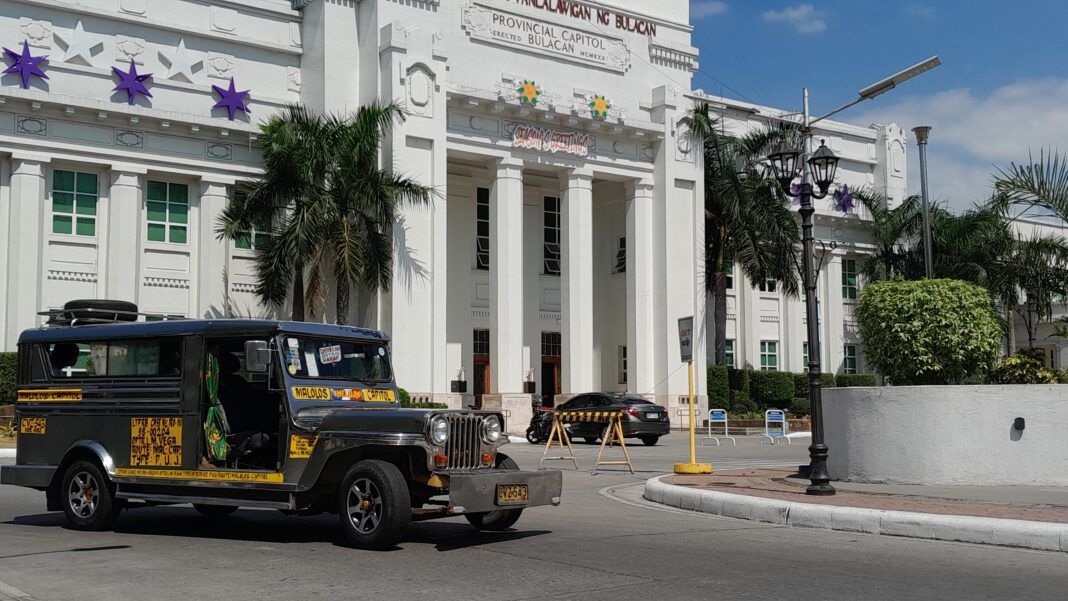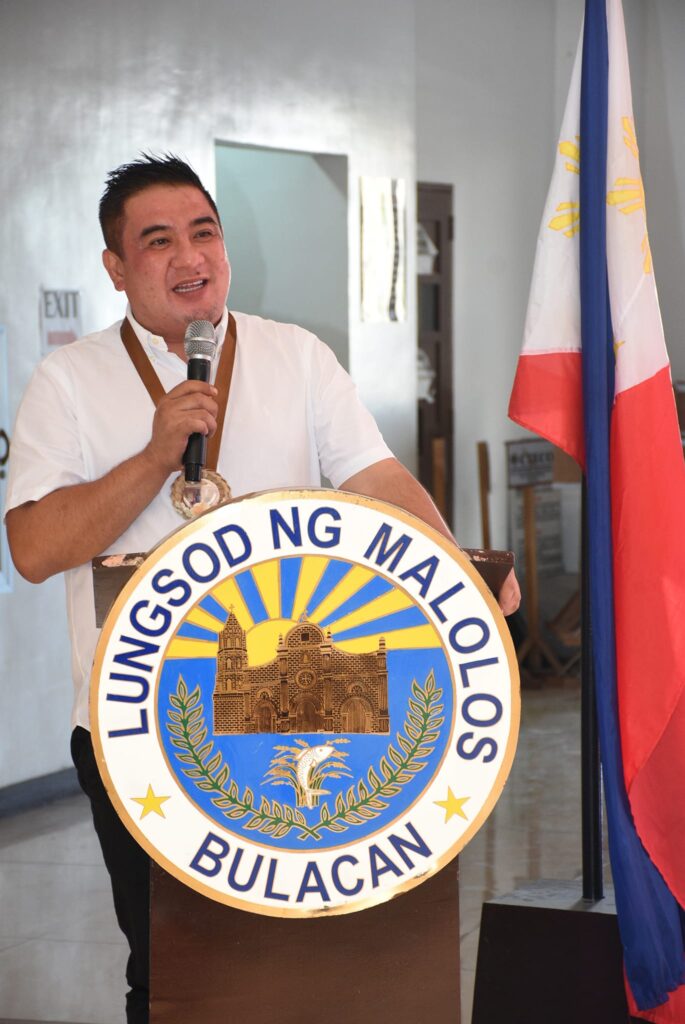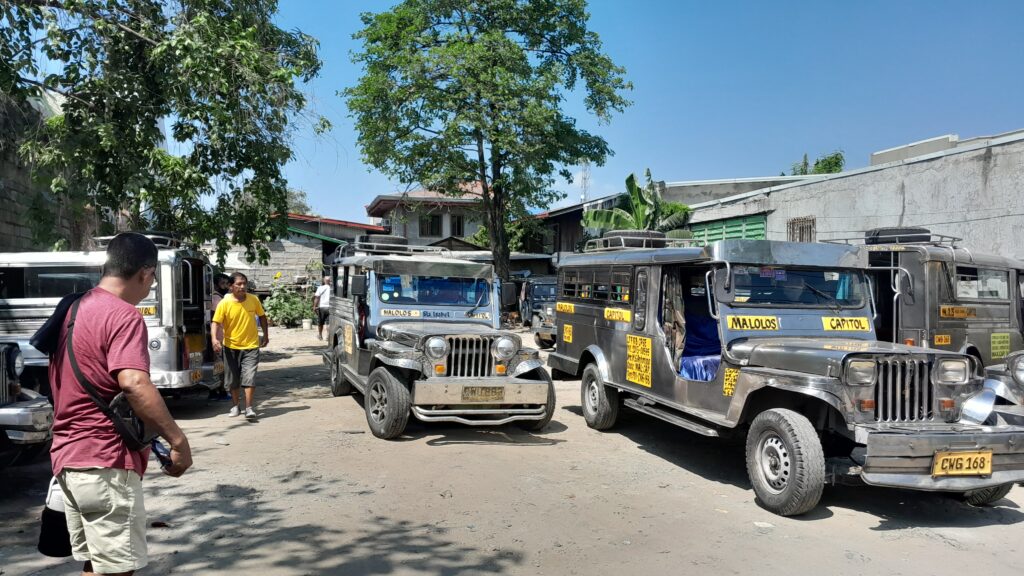
CITY OF MALOLOS— Amid today’s fast-growing modernization and commercialization in this capital city of Bulacan where the state of the art North South Commuter Railway train will very soon take its trails, still, officials and folks want their local traditional, historical and cultural iconic Karatig jeep to remain the face of their current and future public transport.
Mayor Christian D. Natividad and the whole city government strongly support the more than 400 operators and drivers of Malolos Karatig Transport Association (Makata) on their plight to exclude their vehicles in the offing phase out of old Public Utility Jeepney (PUJ) under the 2017 national government’s Public Utility Vehicle Modernization Program.
The Karatig (meaning adjacent or nearby places) jeep is a short version of the Sarao public utility passenger jeep which had continue to thrive over the years as “Hari ng Kalsada” and as one of Manila’s major international symbols. However, Karatig has its own distinction because of its feature as a U.S. military jeep.
Malolos historian Isagani Giron, 71, founder and president of Bulacan Salinlahi told NEWS CORE that American soldiers left a number of the original type of these jeeps to local guerrillas in Malolos in the 1950’s or after the World War II. The local guerrillas then converted and innovated them as commuter vehicle “Karatig jeep” also in the 1950’s as a means of earning to help raise their respective families.
Since then, Karatig starred the Malolos-Bayan-Kapitolyo route as the only PUJ that is allowed to traverse along the historical Paseo del Congreso road where the Barasoain Church is located. But, for over 20-30 years now, from only one single route Malolos-Bayan-Kapitolyo, Karatig had successfully explored additional routes—Bayan-Lugam-Maunlad; Bayan-Fausta-Kapitolyo-Maunlad-Lugam and Bayan-Caingin-Ople Road Diversion-Kapitolyo and the most recent, the Malolos-Bayan-BulSU Diversion to help decongest the narrow Paseo del Congreso.
Today, these passenger jeepneys are now the subject of phase out under the government’s modernization program.
Makata did not join last month’s nationwide strike of different PUJ groups against the modernization program, but they remain firm they want their public transport vehicle to stay for good in all its regular routes in the city.

According to June Joson, former head of the Samahang Pangkasaysayan ng Bulacan (Sampaka) and a De La Salle University professor, Karatig jeep is very significant not just for the riding public in the city but as well as in nearby places who regularly commutes everyday. The Karatig jeeps he said particularly during the 1950’s and the early 60’s served as the local mobility in the town and nearby areas when tricycles were not yet invented.
The Karatig jeep ferry the people of Malolos and other adjacent towns–Bulakan, Hagonoy, Paombong, Plaridel and from other places in and outside the province that are bound to the Provincial Capitol grounds where the Bulacan Medical Center, the Bulacan Provincial Police Command, the Bulacan Provincial Jail, the Bulacan Regional Trial Courts and other national and provincial government agency offices are located.
He said the modern jeep today under the modernization program is not convenient because they are too long and wide. “Hindi convenient gamitin ang bagong labas na PUJ dahil masyado silang malalaki/mahaba. It will cost too much traffic dahil maliliit lang ang mga kalsada sa Paseo hanggang Lugam,” he added.
Sherwin Decena, 46, from Look 1st, City of Malolos who heads the 400-Makata group said in an interview that the Karatig jeep traverses only less than 4 km routes and fit the narrow and small roads of Malolos.
He said, phasing out the units in favor of long modern jeeps will not only send them jobless but would also worsen the traffic congestion along the streets in the capital city. He said, through the help of the city government, they are hoping that they will be protected. According to him, Makata members cannot afford to pay the P2.8 million worth of per unit of the modernized PUJ.
“The roads in Malolos are narrow and small. We traverse less than a 4-km route and we cannot afford to pay the modernized unit at P2.8 million each because of the only minimum fare we implement,” (Maliliit ang daan sa Malolos. Halos wala pang 4 kilometres ang biayhe namin at hindi rin po namin kayang mabayaran ang mga units na nilalabas nila. Halos P2.8 million bawat modern na jeep eh minimum lang naman ang pamasahe sa Karatig), he said.
Today, at the minimum fare of P12.00, driving a Karatig jeep only gives them P500-P700-P1,000 daily earning each day in five days a week. Each unit has a two-day coding.
Decena added that they oblige with the requirement of the Land Transportation Franchise and Regulatory Board (LTFRB) to put up a cooperative which they named as Malolos Karatig Transport Cooperative in order to help support the needs of each member. But he said, what they demand is to allow them to retain the Karatig model type and to only to replace the engine of their PUJ’s to also enable them to comply with the modernization program.

“We already put up a cooperative in compliance with the LTFRB. But still, we remain with our call to allow us to only replace our engines but not our Karatig jeep unit and to just rehabilitate the old ones,” (Naka coop na po kami pero no to phase out pa rin po kami. Tumalima na kami sa gusto ng LTFRB na mag coop pero ang hiling po sana namin sa gobyerno na makina lang sana ang palitan sa unit ng Karatig at rehabilitate lang po iyong mga lumang kaha namin. At gumagawa pa rin ng paraan ang city government na huwag kaming ma-phase out),” Decena told NEWS CORE.
The Karatig ferried the dreams and ambitions of students of Bulacan State University (BulSU) formerly known as Bulacan College of Arts and Trades (BCAT) to their future and their realities as then Malolos Bayan-Kapitolyo passengers. Employees of Bulacan Capitol (beside BulSU) have also sent their children and kin to BulSU as regular commuters for their daily works.
In the 2014 social media account post of Pambansang.com historical and cultural clothing brand in this city owned by Joson, Malolos folks recall the Karatig fare during their time in the 60’s and 70’s as only five to ten centavos.
For Romeo M. Eleogo, 64, from Kanto Boy, Sto. Rosario in this city, but who resides in Makati City with his family, the Karatig jeep has been part of his life as a former student of Marcelo H. Del Pilar High School (when its old original building was still beside the Bulacan Capitol) and BCAT. “The Karatig jeep has been part of my life as a student and certainly to many others. This should not be phased out from Malolos streets so that the next generation of students will continue to enjoy its cultural and historical sense,” he said.
According to Giron, he was then a little child when he witness how then old folks and war veterans in Malolos converted the jeeps into Karatig transport system.
“I am a witness in the conversion of the Willys jeep into a public transport vehicle. The Malolos guerrillas and their families did no longer spend money in putting extension into the small length of the vehicle and were contended on only three passengers that can be loaded, three in each of the passenger seats and two in front, making a total of eight passengers excluding the driver,” (Saksi ako sa “conversion” ng Willys jeep bilang pampasaherong sasakyan dito sa Malolos. Sa mga nagtipid sa “conversion” hindi na pinahaba ang “jeep” kaya tatluhan lang ang sakay nito sa likod ng “jeep”… tatlo sa kaliwa at tatlo sa kanan, dalawa naman sa harap na katabi ng “driver”. Suma-total; walo ang pasahero maliban sa drayber), Giron said.
But in recent years, Karatig jeep was further innovated to have 4-5 left and right passengers. Today, Decena said, left and right-seats can accommodate up to 7 passengers with two in front.
In keeping Karatig in Malolos roads, Natividad said that in every rule, there is an exception and that in today’s modernization and phasing out of 15 years old and beyond PUJ’s, the Malolos Karatig must be spared.
In 2017, the city had passed an ordinance recognizing the economical, historical, traditional and cultural significance of the Karatig jeep and is the only fitted type of PUJ to the narrow and small roads of Paseo del Congreso and other major thoroughfares in the city.
“That is what only fits the narrow and small roads of Paseo del Congreso and the other roads of Malolos that were built based on the old Spanish Architectural design, the narrow roads where the church, the municipal government hall and the public markets are all in one place. Our modern jeep today is just like a mini bus. It will worsen the traffic condition in our roads,” (Iyan lang ang babagay sa kalsada ng Malolos dahil ang Malolos ay old Spanish architectural design, maliit ang kalsada, katabi ng munispyo at palengke. Ang modern jeep natin sa ngayon ay isang mini-bus sa laki, hindi ito kakasya sa ating kalsada at lalong magsisikip sa traffic ang ating mga lansangan,)” the mayor said.
According to the mayor, it is only Malolos which has an iconic Karatig jeep, and it would be a big blow against the history, culture and tradition of the people of Malolos and the whole of Bulacan as well if they will allow this to just vanish and for their children and their children to fail to experience riding on them.
“This is what connects us with our past. It is one of the very few tangible things in our history that we continue to enjoy today. So, wjy we should allow this to just perish because of the modernization. Everyone must join and rally behind us particularly the National Center for Culture and the Arts (NCCA),” he said.
Natividad likened the Karatig jeep to the old water tank structure of the city which had tilted in the recent years and had triggered alarm of possible collapse and which might cause huge accident to the people and the surrounding structures. He said the NCCA then stopped them from demolishing the water tank based on its historical and cultural significance.
“If there is a modernization law, we also have laws on preservation of our historical significance whatever kinds it is that we Filipinos have. Why be the ones to kill this significant part of our heritage, our history and culture. We will kill the heritage preservation instead of the government helping it be preserved because nowhere in the world and in the country a Karatig jeep can be found, but only in Malolos,” (Kung batas man iyang modernization, may batas din tayo na dapat i-preserve ang mga historical significance ano mang uri na meron tayong mga Filipino. This one speaks for the old tradition of the country, bakit tayo ang papatay dito dahil lang sa modernization. Papatayin natin ng heritage preservation. Dapat nga tulungan pa ng gobyerno ang Karatig na maabatili dahil nowhere in the world and in the country you can see a Karatig jeep, but only in Malolos,) Natividad pointed out.
Natividad said he will tap the more than 400 Karatig jeep public transport in the city in batch and random service as the main ferrying vehicle of tourists to visit the historical sites in the city proper that will traverse the narrow road Paseo del Congreso road where the Barasoain Church and other historical places like the Casa Real is located.
The concept is to make Karatig as partner of the city government in promoting the local tourism.
He said all travel groups will be advised to park their guest’s service buses and vans at the wide Malolos City Hall grounds along the MacArthur highway and then take Karatig jeep bound to the old national government houses, the Barasoain Church, the Basilica Minore, the Casa Real, the Museaum of the Women of Malolos and other historical destinations in Malolos Bayan as part of the tours. Old houses in Malolos, in the areas called the “Kamestisuhan,” were converted as key national government offices when Malolos then served as the capital of the Philippines during the First Philippine Republic on January 23, 1899 under the then Emilio Aguinaldo. The Malolos Congress where the Malolos Constitution was drafted was held on September 15, 1898.






